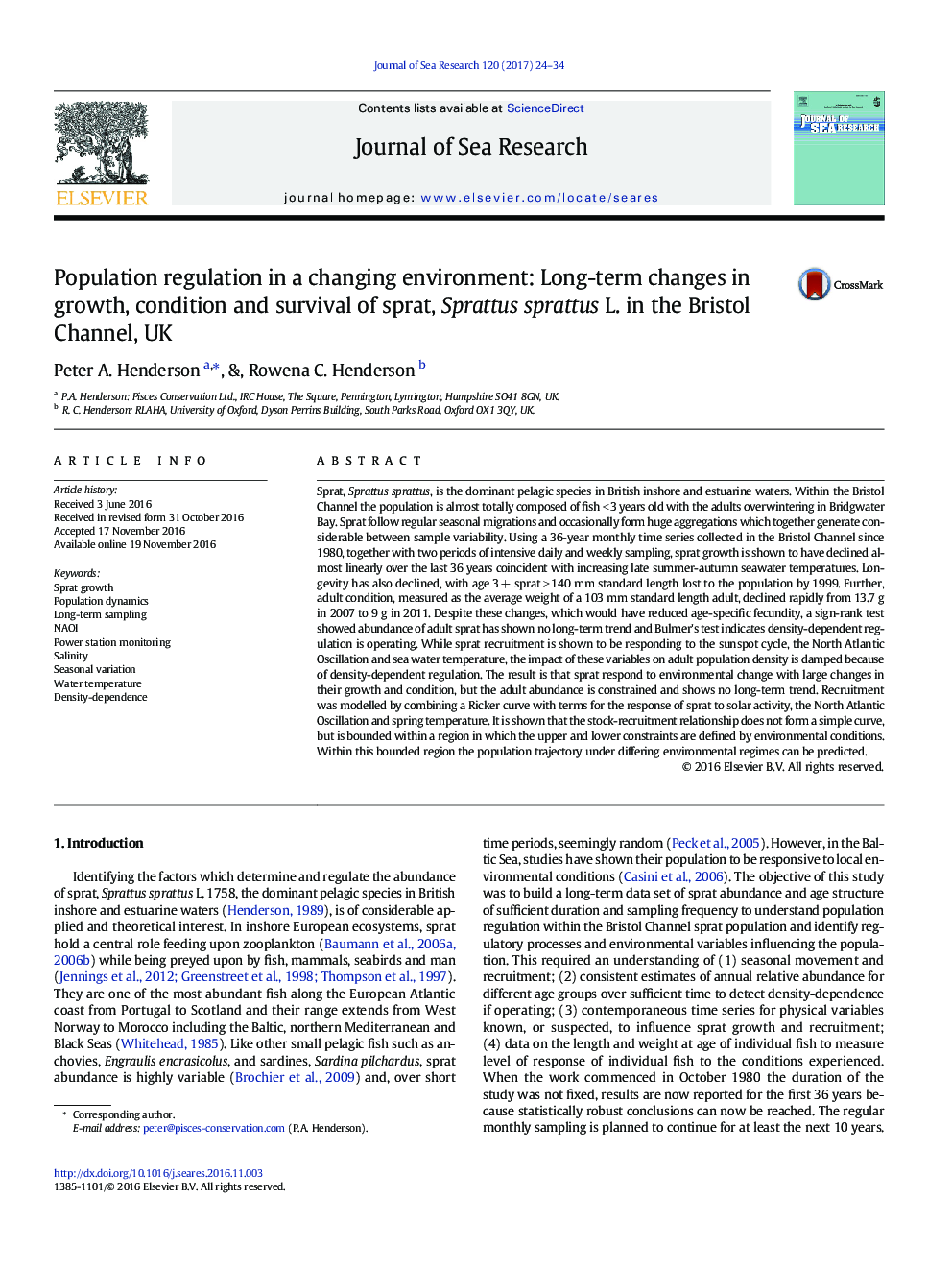| کد مقاله | کد نشریه | سال انتشار | مقاله انگلیسی | نسخه تمام متن |
|---|---|---|---|---|
| 5766078 | 1627455 | 2017 | 11 صفحه PDF | دانلود رایگان |

- Sprat, Sprattus sprattus, is the dominant pelagic species within the Bristol Channel.
- Using a 36-year monthly time series sprat growth is shown to have declined almost linearly over the last 36 years.
- Longevity has declined, with large age 3Â + sprat > 140 mm standard length lost to the population by 1999.
- Adult condition, has shown a rapid decline from 13.7 g in 2007 to 9 g in 2011.
- Bulmer's test indicates density-dependent regulation is operating.
- Sprat recruitment is responding to the sunspot cycle, the North Atlantic Oscillation and sea water temperature.
Sprat, Sprattus sprattus, is the dominant pelagic species in British inshore and estuarine waters. Within the Bristol Channel the population is almost totally composed of fish <Â 3Â years old with the adults overwintering in Bridgwater Bay. Sprat follow regular seasonal migrations and occasionally form huge aggregations which together generate considerable between sample variability. Using a 36-year monthly time series collected in the Bristol Channel since 1980, together with two periods of intensive daily and weekly sampling, sprat growth is shown to have declined almost linearly over the last 36Â years coincident with increasing late summer-autumn seawater temperatures. Longevity has also declined, with age 3Â + sprat >Â 140Â mm standard length lost to the population by 1999. Further, adult condition, measured as the average weight of a 103Â mm standard length adult, declined rapidly from 13.7Â g in 2007 to 9Â g in 2011. Despite these changes, which would have reduced age-specific fecundity, a sign-rank test showed abundance of adult sprat has shown no long-term trend and Bulmer's test indicates density-dependent regulation is operating. While sprat recruitment is shown to be responding to the sunspot cycle, the North Atlantic Oscillation and sea water temperature, the impact of these variables on adult population density is damped because of density-dependent regulation. The result is that sprat respond to environmental change with large changes in their growth and condition, but the adult abundance is constrained and shows no long-term trend. Recruitment was modelled by combining a Ricker curve with terms for the response of sprat to solar activity, the North Atlantic Oscillation and spring temperature. It is shown that the stock-recruitment relationship does not form a simple curve, but is bounded within a region in which the upper and lower constraints are defined by environmental conditions. Within this bounded region the population trajectory under differing environmental regimes can be predicted.
Journal: Journal of Sea Research - Volume 120, February 2017, Pages 24-34